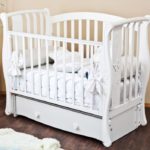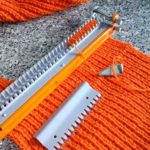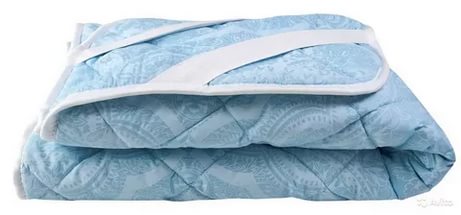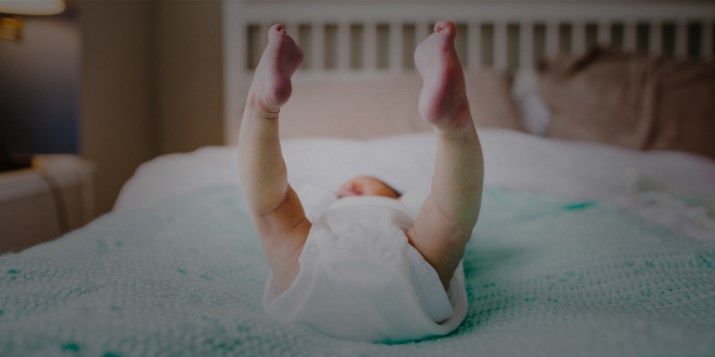Sizes of children's crib mattresses
 The importance of choosing the right children's mattress is undeniable. After all, the sound and healthy sleep of a child, and therefore the proper development of a growing organism, depends on its quality. The main factor influencing the choice of the appropriate product is the age of the child. It also determines the main selection criteria, such as rigidity, internal filling, orthopedic indicators, size and height.
The importance of choosing the right children's mattress is undeniable. After all, the sound and healthy sleep of a child, and therefore the proper development of a growing organism, depends on its quality. The main factor influencing the choice of the appropriate product is the age of the child. It also determines the main selection criteria, such as rigidity, internal filling, orthopedic indicators, size and height.
An important selection criterion is size. It changes significantly as children get older and grow, since the mattress must provide a child of any age with a comfortable position in the crib. Of course, it is acceptable to use custom-made products, however, There are established standard sizes of children's beds and, accordingly, mattresses for them.
The content of the article
Children's mattress size chart
| Standard sizes | Length cm. | Width cm. |
| In a pram or cradle for newborns | 80-95 | 40-50 |
| In a crib for newborns | 120-140 | 60-70 |
| In a cot for children from 3 years old | 140-190 | 70-80 |
| In a crib for teenagers | 190-200 | 80-120 |
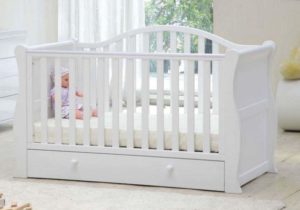 Before purchasing, you should accurately determine its size. To do this, you need to correctly determine the internal size of the bed by measuring the length and width along the side.You should not rely on standard sizes, because they can fluctuate quite a lot, and the deviation is 5-10 cm will make the mattress unusable.
Before purchasing, you should accurately determine its size. To do this, you need to correctly determine the internal size of the bed by measuring the length and width along the side.You should not rely on standard sizes, because they can fluctuate quite a lot, and the deviation is 5-10 cm will make the mattress unusable.
Reference: The permissible gap between the mattress and the edge of the bed is considered to be 2-4 cm. This free space will allow you to make your bed with greater comfort. However, exceeding this indicator is considered dangerous, as it can lead to accidental injuries to the child.
Mattress for a stroller or cradle for newborns
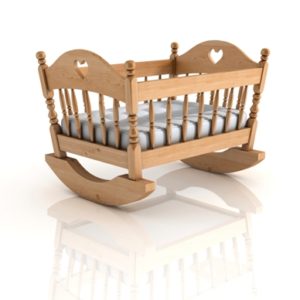 The smallest mattress in a person’s life is a product for a baby stroller or cradle. Its standard sizes may vary in parameters from 40x80 cm to 50x95 cm. Such models are not endowed with anatomical qualities, but perform the function of providing the newborn with a flat and hard surface.
The smallest mattress in a person’s life is a product for a baby stroller or cradle. Its standard sizes may vary in parameters from 40x80 cm to 50x95 cm. Such models are not endowed with anatomical qualities, but perform the function of providing the newborn with a flat and hard surface.
At the same time, it becomes a buffer, smoothing out unevenness on the bottom of the stroller. Their dimensions must strictly correspond to the inner surface of the stroller or cradle, because even minor deviations will lead to noticeable discomfort for the baby.
Mattress for a crib for newborns
In most cases, parents prefer to buy a crib rather than a cradle for their newborns. Unlike a cradle, which can be used no more than 1-1.5 years, it is already used before the child reaches 3 years old.
If you buy a crib, you will also need to buy a mattress for it, the size of which will already be 60x120–70x140 cm. It will also create a low, breathing space between the bottom of the bed and the baby's body, while maintaining sufficient rigidity of the sleeping area.
On a note. It is better to purchase a product for babies with a double-sided filler, when there is coconut fiber or coir on one side, and latex or polyurethane foam on the other. This type will provide the child with more correct rigidity. In this case, for the first year and a half it should be placed with the coconut side up, after which it should be turned over to the soft side.
Crib mattress for children over 3 years old
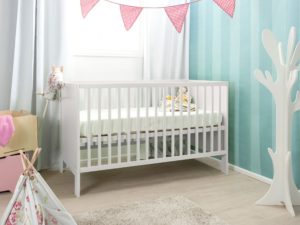 At the age of 3–4 years, the child will feel cramped in his first crib. Therefore, parents will have to purchase a larger bed. In order to save money, children can immediately purchase a large single or one-and-a-half bed.
At the age of 3–4 years, the child will feel cramped in his first crib. Therefore, parents will have to purchase a larger bed. In order to save money, children can immediately purchase a large single or one-and-a-half bed.
However, for the developing skeleton, this option is not entirely correct, since the requirements for rigidity will change twice more. A better solution would be to purchase a bed and mattress ranging in size from 70x140 to 80–190 cm.
At the age of 4–5 years, children still require a certain rigidity during sleep. At the same time, they become quite active, starting to jump and run everywhere, including on the bed. Expensive orthopedic models may not be able to withstand such a load, so for children aged 5–10 years it is better to purchase high-quality spring options.
Bed mattress for teenagers
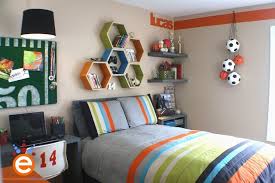 Adolescence is a time of active growth and final formation of the spine. Many teenagers manage to grow to the size of an adult, or grow at a significant rate. Changing their sleeping place will no longer be a desire, but an urgent necessity.
Adolescence is a time of active growth and final formation of the spine. Many teenagers manage to grow to the size of an adult, or grow at a significant rate. Changing their sleeping place will no longer be a desire, but an urgent necessity.
Mattress sizes The choice for a bed for teenagers will be determined not only by growth indicators, but also by possibilities, since a bed for them can already be purchased, either a single or a one-and-a-half-bed. The width of standard sizes will be 80–120 cm, and the length – 190–200 cm. The preferred type will be orthopedic. He will no longer suffer from children's pranks and will be able to fully perform his function.
For your information. Today, there are both spring and springless orthopedic options.
Height of mattresses for children
Height for children's beds is also a significant criterion. It is determined both by the requirements for rigidity and the internal filling of the mattress. In some cases, the height is determined by the inner side of the bed; in order to avoid injury, it must rise above it by at least 5 cm.
In turn, there are age restrictions on height. So, the parameter of mattresses for children under 3 years of age should be between 6 and 10 cm, spring height for junior schoolchildren – 10–20 cm, height of orthopedic for teenagers – 14–20 cm. In this case, some excess of the indicators for spring and orthopedic models is allowed. Thinner ones can be used as mattress covers or bedspreads for sofas.

